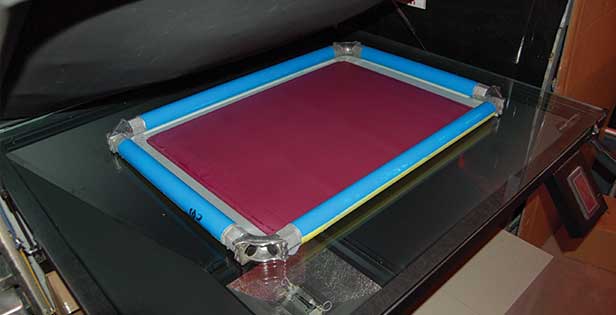February 20, 2019
How to Use High-Solids Acrylic
HSA inks bridge the gap between water-based inks and traditional plastisols.
New fabrics, customer demands and potential government regulations on the horizon are all spurring development of new ink systems for the screen-printing industry. One of these developments is high-solids acrylic (HSA) ink. HSAs are water-based inks, but with a chemical formulation that makes them thicker than a traditional water base and a little more comparable to plastisol inks. They print like a very soft plastisol, but they’re both phthalate- and PVC-free, making them more desirable to some decorators and many customers.
While plastisol is by far the most common ink choice among screen printers in North America, Europe has already shifted dramatically toward water-based ink systems due to the continent’s more strict regulations on the industry.

A water-resistant emulsion is required for HSA inks. For testing purposes, short runs can be accomplished with your regular emulsion.
Pair With Performance Wear and Soft Garments Performance wear is one of the driving forces toward the use of HSA inks, which give these garments a smooth, stretchable, higher-end finish that many end-users prefer and request. Originally only an athletic product, performance wear has grown into a wide-ranging staple of the apparel industry. If you’re not printing it today, you will be tomorrow.
Decorators using plastisol inks can use a low-temp ink additive to print these garments and avoid dye migration common among 100% synthetic fabrics. This additive allows a screen printer to cure plastisol ink about 40 degrees lower than standard, and is available for HSA inks as well. This keeps the dye in the garment from migrating into the ink.
HSA inks are also popular for the softer 100% ringspun cotton garments available. Customers are demanding a print similar to the soft hand of these garments. These inks not only contribute to the feel of these garments, but the stretchability of the print works well with these popular fabrics.
Transitioning From Plastisol Many plastisol decorators have tried water-based inks in the past and had difficulty due to the vast difference in these ink systems. If you’ve been considering a transition from plastisol to water-based, HSA inks may be your answer. They’re closer to plastisol than previous water-based ink systems, and HSAs dry more slowly in the screen.
Plastisol inks can be left on the screen for days, even weeks, but water-based inks will dry out on the screen. While HSAs take longer to dry, care still needs to be taken – they require a water-resistant emulsion to avoid breakdown of the stencil during production, and misting of the screens with water may be required depending on your shop environment. Immediate cleanup after the job is done will be required as well. Some re-training and refining of your processes will be necessary.
These inks are more opaque than any water-based inks you may have experimented with in the past. They’re still not as opaque as plastisol, but HSAs can be effectively printed onto dark garments. A double pass of white underbase will likely be necessary, or printing over a discharge ink base on cotton garments. Flashing between colors may be needed for maximum opacity.
If you’ve been thinking about making the transition from plastisol to water-based, HSA inks may be your answer, particularly if you’re looking for a solution that has elasticity and opacity comparable to the plastisol inks you’ve been using.
Terry Combs is a 35-plus-year veteran of the garment-printing industry and has managed production shops across the United States. He is currently in sales and training with Equipment Zone, Franklin Lakes, NJ, working from Scottsdale, AZ.